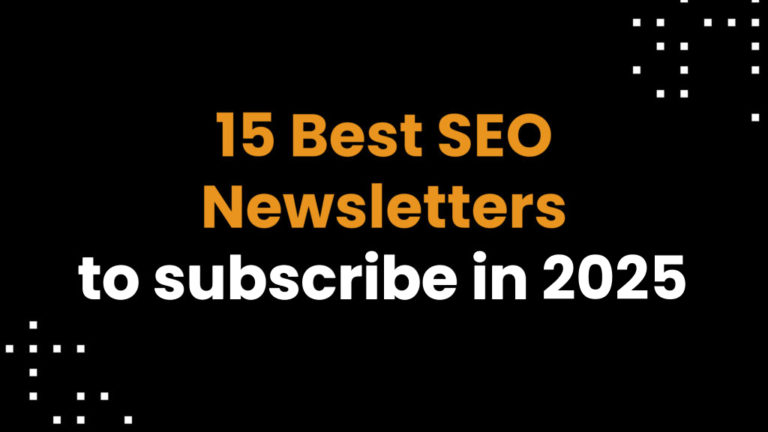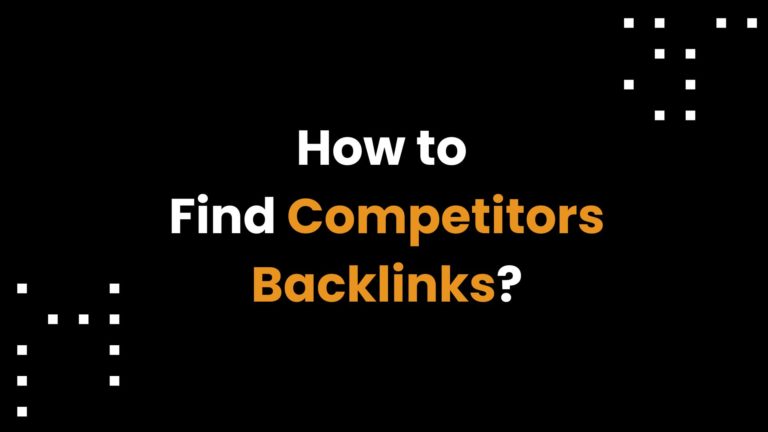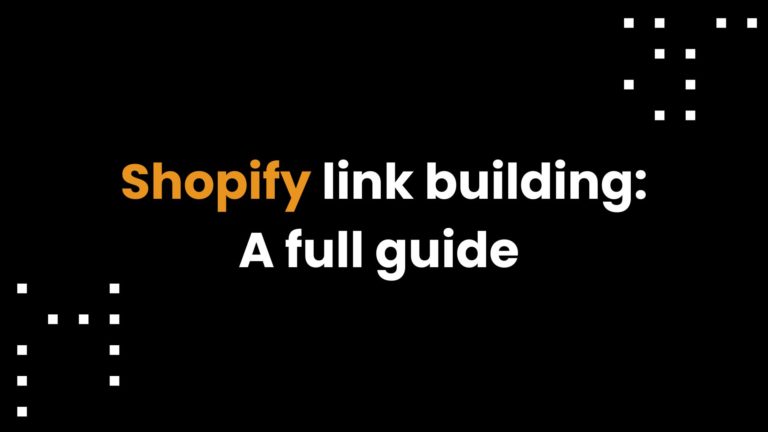Anchor text is the text of the link. It allows not only to place links in the context of the article but provides Google with a clue when its bots are analyzing your website. Anchor text in SEO is intended to serve both users and algorithms. Anchor texts make website content look natural and ease the navigation through subpages.
In this article, you will learn exactly what anchor text is, how to use target keywords effectively, and what role it plays in optimizing your website rank.
What is anchor text?
Anchor text – also called an anchor – is the content of the link that appears in the place where the link was placed. Anchor text is the clickable text that is part of a hyperlink. Selected snippet of text hides a link to another web page. Anchor text can be quickly identified, because usually the content of the link is visually highlighted. Typically, it has a different color and is usually underlined.
What does anchor text look like in HTML code? This is best illustrated by an example:
< a href=”https://www.google.com/”>Google search engine< /a>
The principle of operation in this case is very simple. After the a href attribute we place the full URL, and between the tags we place the anchor. In this case: “Google search engine”.
Clicking on it may open the target link in the same or a new window. This depends on the settings in your content management system. What is more, clicking an anchor may initiate a file download or new email creation, the latter requiring an appropriate application.
Types of anchor texts
Properly selected anchor texts are an inseparable element of a well executed link building strategy. In order to conduct effective actions, you should consciously use different types of anchor text, because some of them may be treated by Google robots as spam. So if you want to use anchor texts correctly, you should first learn about their basic types. Incorporating natural anchor text within your strategy can enhance readability and avoid keyword over-optimization.
Exact match anchor text (abbreviated: EMA)
To understand the importance of the exact match anchor text and its impact on the search engine algorithm, you need to go back to 2012, when Google introduced the famous Penguin algorithm. One of the key assumptions of the changes implemented at that time was to promote naturalness on websites. Google engineers wanted to put an end to the practice of artificially stuffing anchors with key phrases, which could instantly improve the visibility of a page that had little traffic so far.
This is what EMAs are, where the text anchor is nothing more than the most important phrase for a given page. Using an exact match anchor requires extra attention, because too intensive use of the exact same anchor text may be treated by Google robots as a spamming practice. Overall, the judicious use of EMAs in the right places will have a very positive effect as long as – from an SEO point of view – they are placed naturally and not very often.
Partial match
The structure of this type of anchor is somewhat similar to EMA, with the difference that it is not limited to the key phrase only. Although there are some differences, partial match anchor text resembles long tail phrases the most. Many SEO agencies base their entire positioning strategy on this type of linking, highlighting the importance of anchor text SEO in both on-page optimization and link-building strategies. Using descriptive and relevant anchor text that directly corresponds to the title or content of the linked page can significantly enhance both user experience and SEO performance.
No match
A very interesting case in the context of SEO is the use of generic anchor text, because anchors are usually supposed to clearly indicate what they refer to. That is why it is so popular to use key phrases or article titles in anchors. Meanwhile, very often you can come across anchor texts on the web that read: “Here”, “Click”, “Check” or “See”.
These are the so-called generic anchors, which primarily function as Call To Action (CTA), i.e. to encourage the user to take a specific action. While these generic anchor texts are not perfectly recognized by the Google algorithm, they work great for the audience. It is therefore important that such anchor texts are sufficiently surrounded by information about what they actually refer to. So it’s best if the context shows which page the link leads to, especially to avoid linking to the same page with identical anchor text.
Clean link
To optimize the content of the link text, you don’t always have to go for a keyword or look for elaborate forms of anchor texts every time. Sometimes the website address itself, i.e. a pure link, is enough. It is only important that when you click on the links, they will take you to the right place. Pure links can be part of link building, but they are not as effective for both the algorithm and the user.
However, sometimes they can be helpful in avoiding keyword cannibalization.
Brand anchors
Among the various types of anchors, brand anchors are the most commonly used in external links. What do they look like? The content of the sponsored article includes the name of the brand, which is also the anchor text and takes, for example, to the homepage of the manufacturer of the equipment referred to in the article. It is a useful tool in building brand awareness among Internet users.
When presenting examples of various anchors, one should not forget that a graphic element can also be an anchor. After all, this is a rare practice, but an anchor with the alt attribute can be helpful in positioning in Google Images.
Is anchor text important for SEO?
The main purpose of using anchor texts and internal links is to persuade the user to click on a link – whether it is leading to another subpage on the same website or to another website. These activities generate traffic to the website, so for this reason they are important from the point of view of SEO. Incorporating the target keyword in various formats such as exact match and partial match anchor texts can significantly improve search visibility and optimize content effectively. In internal linking, their purpose is to encourage users to visit as many subpages as possible, while in external linking, anchor text is crucial for the conversion and effectiveness of backlink.
Anchor text, however, can help as well as hurt a website. Once again, let’s go back to the Penguin algorithm, which, above numerous keywords on a given page, values the naturalness and transparency of the website’s content. Historically, keyword rich anchor text was used to manipulate Google’s algorithms, leading to high SERP rankings but often sacrificing user experience. Both the link and the text should be properly selected and closely match the content of the page to which they refer the user. Using the same anchor text repetitively can appear spammy to Google and may lead to penalties, as search engines prefer a natural variety of anchor text that reflects the content it links to.
Diversity is also important. It is recommended to diverse your anchor text in a following way for one website:
- 30-40% are brand anchor texts,
- 30-40% is partial match anchor text,
- the remaining 20-40% is exact match anchor, zero match and pure links.
In the case of internal linking, you have a bit more freedom, but you should always pay attention to the naturalness of anchor texts, and when it comes to the number of links – do not go to extremes. Ultimately, too much of them may discourage the user from interacting for not only visual but also functional reasons. Effective anchor text provides clarity about the destination of the link, thereby informing search engines about the relevance of the linked pages in relation to their content.
Platforms like Linkhouse Backlink Marketplace can be instrumental in executing a well-rounded link-building strategy. By providing access to a wide range of external anchor text opportunities, these marketplaces help ensure that your anchor text is diverse and relevant, which is crucial for SEO success. Utilizing such platforms allows you to strategically incorporate exact match, partial match, and brand anchors, enhancing both your site’s visibility and authority.
FAQs
1. What does anchor text look like in HTML and how does it affect SEO?
Anchor text is the visible, clickable text in a hyperlink, typically highlighted in a different color and often underlined. In HTML, it appears within an <a> tag, like this: <a href=”https://example.com”>Example Link</a>. This text helps search engines understand the content of the linked page, contributing to SEO efforts by indicating relevance and context.
2. What are the best practices for optimizing anchor text in SEO?
To optimize your anchor text for SEO, use a variety of anchor text types, including exact match, partial match, and brand names. It’s important to maintain anchor text variation to avoid penalties from search engines. Ensure that the anchor text is relevant to the linked content and is placed naturally within the surrounding text to maximize SEO value.
3. How should external anchor text be used for SEO best practices?
When using external anchor text, aim for a mix of brand names, descriptive phrases, and natural language to enhance SEO value. External anchor text should be relevant to the content it links to and should appear naturally within the rest of the text. Avoid over-optimization by not repeating the same anchor text excessively across different links.
4. How can internal anchor text improve website navigation and SEO?
Internal anchor text helps improve website navigation by guiding users to relevant subpages within the same site. It also aids SEO by distributing page authority and relevance signals across the site. Use descriptive and varied anchor text to ensure clarity and enhance the user experience, while also supporting SEO efforts.
5. What is the role of anchor text variation in SEO anchor text optimization?
Anchor text variation is crucial in SEO anchor text optimization as it prevents search engines from viewing the links as manipulative or spammy. By using a diverse range of anchor text types, you can maintain a natural linking profile, which helps improve search engine rankings and ensures that the anchor text used aligns with the content it links to.








